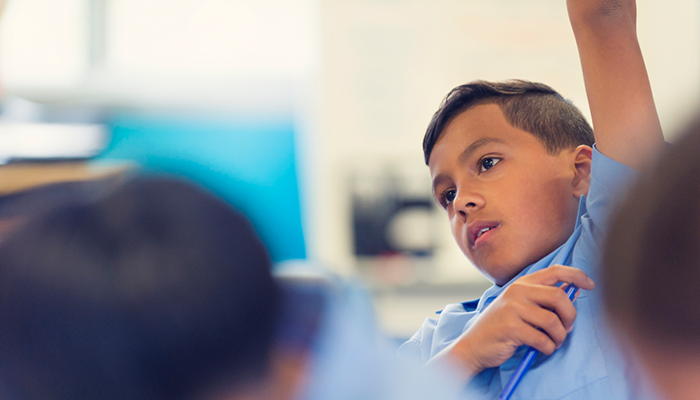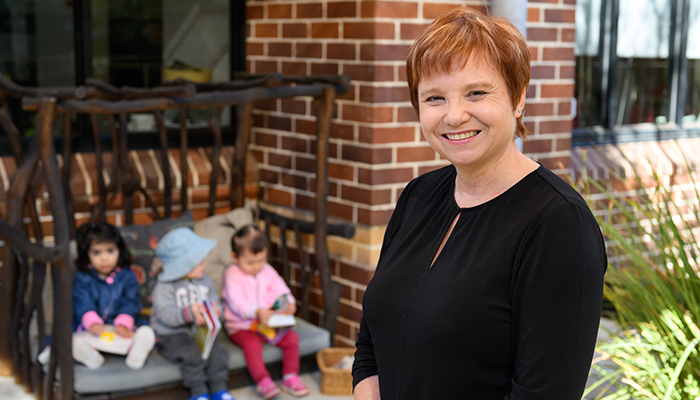The idea that young children and art galleries don’t mix has been swept away at Sydney’s Museum of Contemporary Art (MCA), where a collaboration with Macquarie University has revealed the wonder and joy that under-5s bring to their encounters with art.
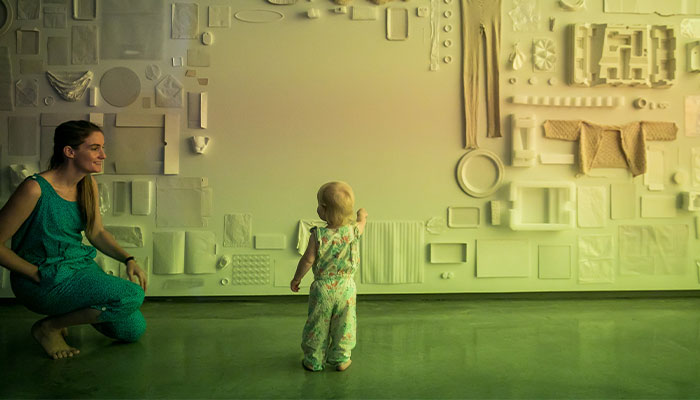
Show me more: Children as young as 11 months took part in the Art and Wonder pilot project. Photo credit: Anna Kucera
And the collaborators are not waiting until the end of their five-year project to bring their findings to the world, with the release this week of a book that documents the project’s pilot phase: Art & Wonder: Young Children and Contemporary Art, co-lead authored by Dr Clare Britt, Honorary Lecturer at Macquarie’s School of Education, and Amanda Palmer, Early Learning Coordinator at the MCA.
Within its 233 pages are the experiences of children, families, teachers, artist educators and the research team as the project sought to deep-dive on just how young children engage with contemporary art in a gallery context, and how that up-close knowledge can be used to maximise their creative learning experiences – and by extension their early development, not just intellectually but as cultural citizens.
The benefits to children’s development brought by arts-rich early learning are well established, says Britt – research has measured direct impacts on school readiness in all areas of learning, as well as improved literacy and lower levels of the stress hormone cortisol. The benefits to children from arts-rich early learning are especially pronounced in communities experiencing economic disadvantage.
That really deep engagement that you can see through the beautiful images throughout the book will be really interesting and powerful for people.
Neuroscience too is revealing how much brain development occurs in the first three years of life, says Palmer, “and we know that the environment plays a big role in that cognitive development, so by welcoming children into museums and galleries from a very young age, they know that they are places where they belong right from the very beginning.”
The project began in late 2016 and, while disrupted by COVID-19 lockdowns, has involved visits to the MCA based in The Rocks by groups of children as young as 11 months from Mia Mia Child and Family Study Centre at Macquarie University and, further into the project, early learning centres run by Blacktown City Council.
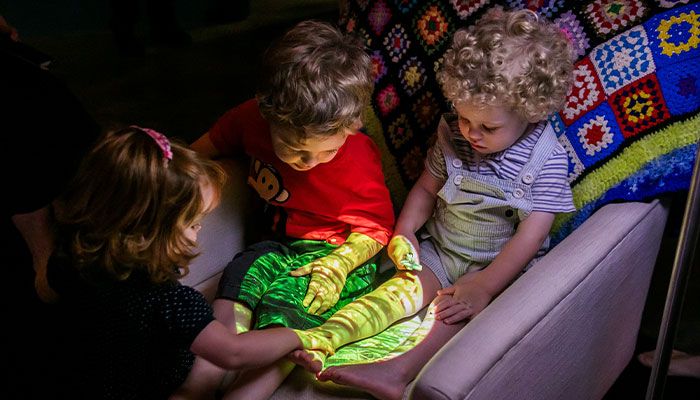
Deep engagement: Frankie, William and Sam engage with light, movement and colour at the Musuem of Contemporary Art. Photo credit: Anna Kucera
Britt says the book reveals the competence and capabilities of infants, toddlers and pre-schoolers when it comes to contemporary art – particularly in the thoughtful way they engage with the artwork, the artist and the materials.
“That really deep engagement in those aesthetic experiences that you can see through the beautiful images throughout the book will be really surprising and interesting and powerful for people,” says Britt.
“And I hope the kind of openness, exuberance and joy that the children bring to their engagement with contemporary artwork will give adults permission to interact with it in a really open way.
“We saw that happen within the gallery space; whenever we were there with young children it did loosen up the general public; often you would see the smile start to spread and the realisation that these really are wonderful works; this is a place of reverence, this is a gallery, but also there is this joy here, this real exuberance connecting with the work.”
No end of surprises
In 2012, the MCA launched its National Centre for Creative Learning, and the team began to work closely with local early childhood teachers, children and families to pilot a new program specifically designed for early childhood education and care groups. Throughout this process of community consultation, Palmer says, the MCA’s Early Learning programs continued to evolve.
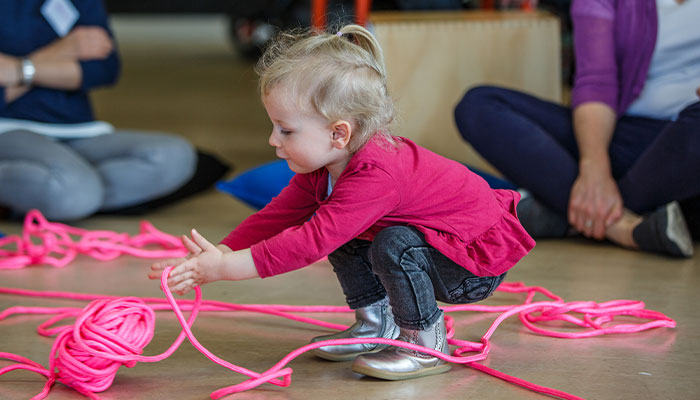
Creative learning: Exploring an unpredictable pink ball as part of the Art and Wonder project. Photo credit: Yaya Stempler
Keen to explore further, Palmer approached Dr Britt at Macquarie University with a view to commencing a research project involving collaboration with Mia Mia Child and Family Study Centre.
“We wanted to go the next step further and really delve a bit deeper to better understand how we could continue offering high quality creative learning experiences to our youngest audience,” Palmer says.
“We want to ensure what we are doing is relevant and meaningful for young children, and that we are not guessing what they want from their museum experience, but we actually make it research based.”
Even really young children under two, on their very first visit, were able to pick up on the complex cultural protocols of being in the gallery.
As the visits got under way, the tiny children had no end of surprises in store for the researchers, whose work to gather deep knowledge through the project has included written observation, analysis of videography and photography of the children in the gallery, and focus groups with families, teachers and artist educators.
Britt talks of the children’s “extraordinarily sensitive and respectful” ways of interacting with the works, and of their desire to know about the artists. “Even really young children under two, on their very first visit, were able to pick up on the complex cultural protocols of being in the gallery – the white lines that protect the work from the viewer, and knowing that some works can be touched and some can’t,” she says.
“Something else we found early on was that the children wanted to have relationships with the artists: we would be looking at these fabulous works, and the children would want to know, who are the artists? Where do they live? How do they make their works?”
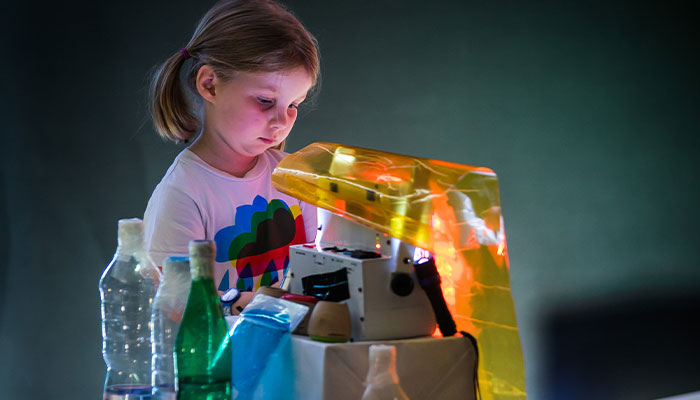
Hands on: Alex works on an installaion of light and materials in the MCA's creative studios. Photo credit: Anna Kucera
Palmer talks of how the children lead the way through the gallery in totally different directions than the artist educators and research team might expect and, in the interactive space created especially for them, how they similarly took the research project in unexpected directions.
“The theoretical and methodological approaches taken in this research project are grounded in respecting and listening to the child: foregrounding children’s participation rights," Palmer says.
"Through an inquiry-based approach, we are able to create space in the program for children to really be heard and take the lead. Through this process we have learned a lot about very young children’s interests and connections with contemporary art.
“This long-term study is providing us with an opportunity to learn a lot about how very young children engage with artists and contemporary art in ways that are delightfully unexpected and unique to childhood.
"We’re learning more about the relationships between children and artists, how children respond to artworks and the spaces they’re exhibited in, and it is the stories they bring to the artworks that has been really interesting, too."
Art & Wonder: Young Children and Contemporary Art can be purchased through the MCA Store. The book’s authorship includes contributions from research team members Wendy Shepherd, Janet Robertson, Dr Belinda Davis, Nicole Barakat, Cara MacLeod and Brook Morgan.
Dr Clare Britt is an Honorary Lecturer at Macquarie University's School of Education.

